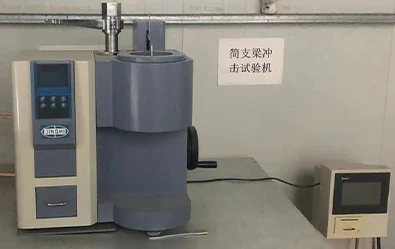loading...
- No. 9, Xingyuan South Street, Dongwaihuan Road, Zaoqiang County, Hengshui, Hebei, China
- admin@zjcomposites.com
- +86 15097380338
- Welcome to visit our website!
water treatment
Water Treatment Ensuring Access to Clean Water
Water is an essential resource for life, playing a critical role in health, agriculture, industry, and virtually every aspect of human activity. However, the quality of water is often compromised by various pollutants and contaminants. As populations grow and industrial activities expand, the necessity for effective water treatment methods becomes increasingly important. This article explores the significance of water treatment, the methods employed, and the future challenges to ensure access to clean water.
The Importance of Water Treatment
Clean water is fundamental to public health. Contaminated water can carry diseases such as cholera, typhoid, and dysentery, affecting millions around the world. According to the World Health Organization (WHO), unsafe drinking water contributes to approximately 485,000 deaths annually due to diarrheal diseases. Additionally, industrial pollutants can accrue in waterways and affect ecosystems, more broadly impacting biodiversity and the health of the environment.
Water treatment is not only a public health necessity but also a vital component for agricultural productivity and industrial operations. In agriculture, providing treated water helps improve crop yields and maintain soil health. For industries, access to treated water is crucial for manufacturing processes, equipment maintenance, and waste management.
Methods of Water Treatment
Water treatment involves various processes designed to remove pollutants and contaminants
. These methods can be categorized into several stages1. Pre-treatment This initial phase involves screening to remove large debris such as leaves, branches, and plastic. This step ensures that subsequent processes run smoothly, preventing damage to equipment.
2. Coagulation and Flocculation Chemicals known as coagulants are added to the water to promote the clumping of small particles into larger aggregates, called flocs. This process enhances sedimentation and helps remove suspended particles.
3. Sedimentation Once flocs are formed, the water is allowed to sit in large tanks, enabling the heavier flocs to settle at the bottom. This process often takes several hours.
water treatment

4. Filtration After sedimentation, the water undergoes filtration through layers of sand, gravel, and activated carbon. This step further removes remaining impurities, including microorganisms and smaller particles.
5. Disinfection The final step in the treatment process is disinfection. Common disinfectants include chlorine, ozone, and ultraviolet light. This stage is crucial for eliminating pathogenic organisms that pose health risks.
6. Post-treatment In some cases, treated water may be subjected to advanced treatment processes such as reverse osmosis or nanofiltration to remove dissolved solids and micropollutants, ensuring a higher quality of water, especially for applications in healthcare and food industries.
Challenges in Water Treatment
Despite advancements in technology and processes, significant challenges remain in ensuring the availability of clean water. Climate change has led to more extreme weather patterns, resulting in droughts and flooding, which can disrupt water supplies and decrease water quality. Additionally, aging infrastructure in many developed countries contributes to water loss and contamination.
Furthermore, there is a growing concern about emerging contaminants such as pharmaceuticals and personal care products, which are not effectively removed by traditional treatment methods. As a result, there is a pressing need for research and development of more sophisticated treatment technologies.
The Future of Water Treatment
The future of water treatment is likely to involve innovation and adaptation to meet changing demands. Technologies such as smart water management systems can monitor and optimize water treatment processes in real-time, improving efficiency. Additionally, there is increasing interest in decentralized treatment systems, which can provide localized solutions to communities lacking access to centralized water supplies.
Public awareness and education also play a crucial role in sustainable water management. Encouraging water conservation and the proper disposal of hazardous materials can significantly reduce the burden on water treatment facilities.
In conclusion, effective water treatment is vital for ensuring that communities have access to clean, safe water. As we move forward, we must embrace new technologies, address emerging challenges, and foster a culture of sustainability to protect our most precious resource water. By doing so, we can ensure that future generations inherit a world where clean water is a guaranteed right, not a privilege.
-
The Rise of FRP Profiles: Strong, Lightweight, and Built to LastNewsJul.14,2025
-
SMC Panel Tanks: A Modern Water Storage Solution for All EnvironmentsNewsJul.14,2025
-
GRP Grating: A Modern Solution for Safe and Durable Access SystemsNewsJul.14,2025
-
Galvanized Steel Water Tanks: Durable, Reliable, and Ready for UseNewsJul.14,2025
-
FRP Mini Mesh Grating: The Safer, Smarter Flooring SolutionNewsJul.14,2025
-
Exploring FRP Vessels: Durable Solutions for Modern Fluid HandlingNewsJul.14,2025
-
GRP Structures: The Future of Lightweight, High-Performance EngineeringNewsJun.20,2025
